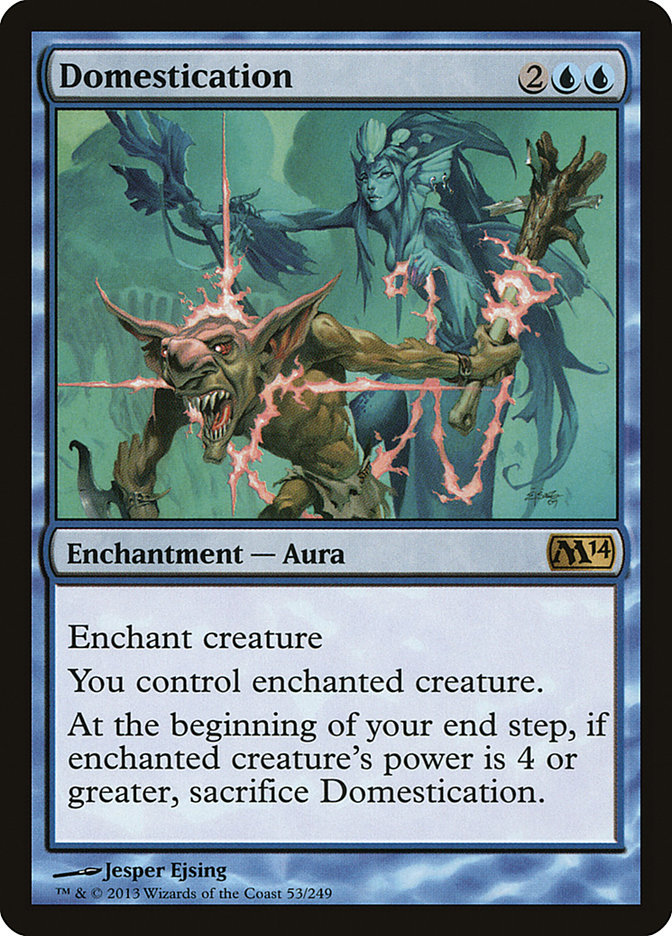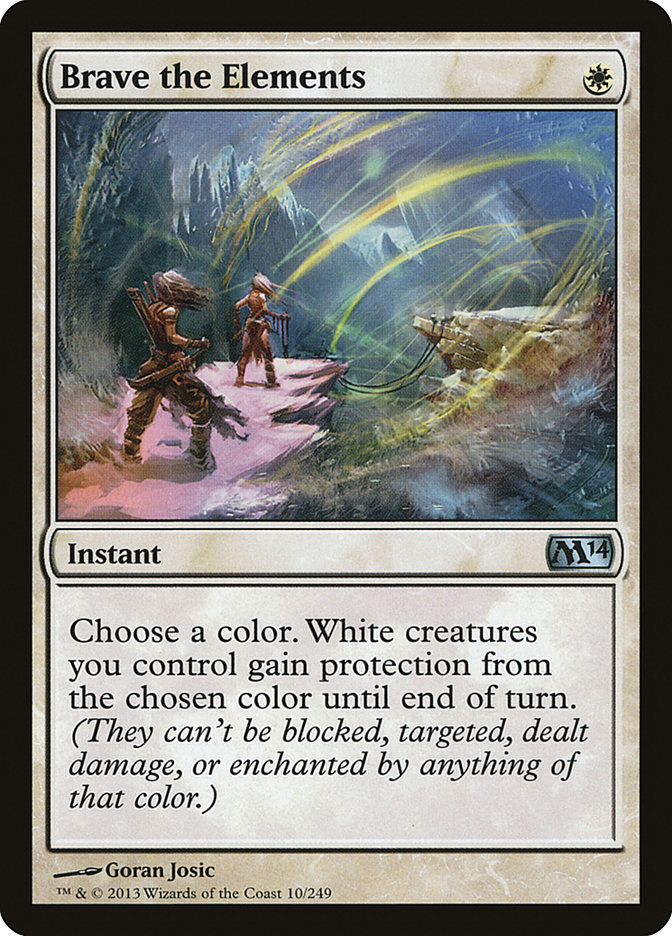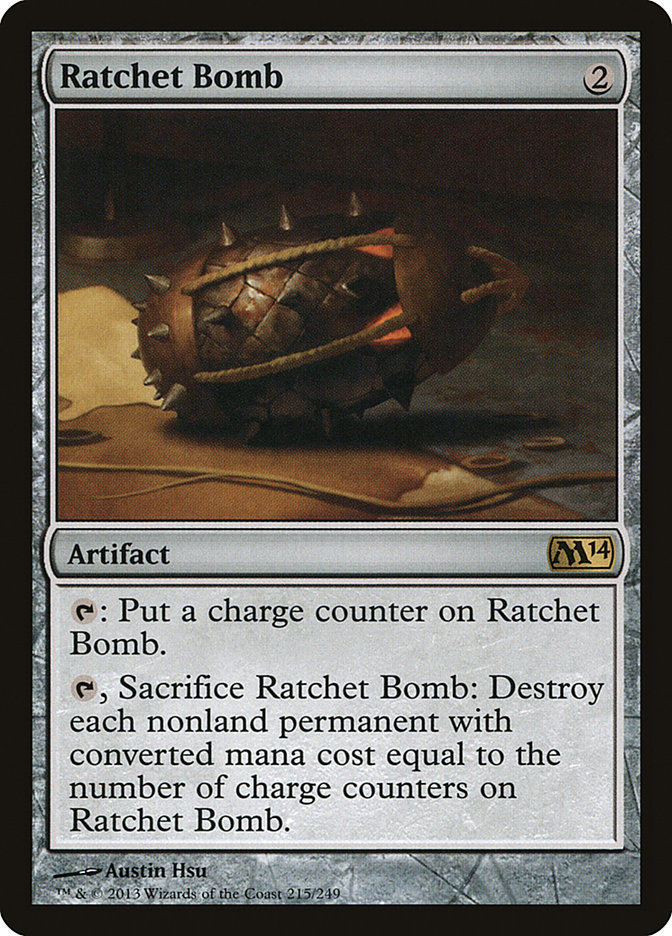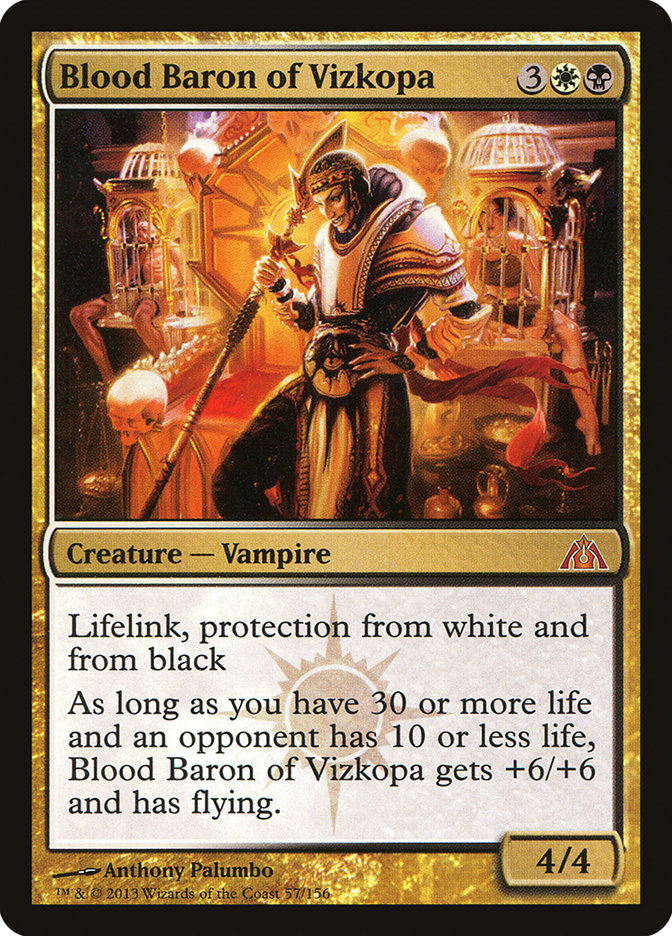With still a few weeks left of "old Standard" before the release of Born of the Gods, I find myself in a bit of a pickle. I can’t rightly continue writing strategy articles about the best way to play Mono-Black or Mono-Blue Devotion because those decks could change significantly over the next month, I don’t have any particularly sweet brews that I haven’t written about, I don’t want to write another article about Esper Deathblade in Legacy, and I can’t really write about Modern with the Pro Tour on the horizon.
However, what I can do is reflect on what we’ve seen over the last few months in Standard to find something tangible that we can apply to the future Standard as well as deckbuilding in general. I’ve noticed a lot of things over the last few weeks in both developments with certain archetypes and flaws in the way people are going about building their decks.
This article is going to contain valuable information on building the best deck you possibly can for your next tournament, so I hope you take this advice to heart. I’ve been thinking about a lot of these strategies and pitfalls in deckbuilding for a while now, and it’s only recently that I’ve found a way to actually express them in writing. Let’s begin, shall we?
The Copycat
The first section of this article is going to explicitly pertain to the "netdeckers." Yes you, the guy who just finished buying all the cards for Tyler Wilkerson’s Mono-Blue Devotion deck. For starters, let me just say that you are most certainly welcome to play last week’s deck. Honestly, that is often the correct choice for the next tournament. When something is successful, it only makes sense that it will continue to be successful as long as nothing really changes.
With that said, there are a lot of common flaws you can avoid when building a deck, and just looking at the most recent results will most definitely help you prepare yourself for the next tournament. If you’re planning on just playing the same 75 as Owen Turtenwald from SCG Standard Open: Indianapolis, I want you to pause for a moment and think about why you’re doing that:
1. His deck won the tournament.
2. Owen is a very good player.
3. He has had a lot of success with the deck so his version is probably the best.
The event he won also featured a (re)breakout deck in the form of G/R Monsters. Now let’s take a look at his list, and I’ll tell you why it would be a big mistake to copy his exact 75.
Creatures (16)
Lands (26)
Spells (18)
Sideboard

Did you notice that only four of his removal spells can kill a Polukranos, Stormbreath Dragon, or planeswalker? That’s because Owen built his version featuring Devour Flesh and Pharika’s Cure as his cheaper spot removal, mostly likely due to the fact that he expected to play against Mono-Blue Devotion and the mirror. Pharika’s Cure has the added upside of being able to kill small dorks and gaining you life against the aggressive decks on top of killing an early Pack Rat. But with this removal suite do you see a common problem we could have with G/R Monsters? Hero’s Downfall and Thoughtseize can only do so much before they eventually kill you with some huge threat.
Owen built his deck for a different metagame that you would likely not see the week after this event. His Devour Fleshes and Pharika’s Cures are acceptable against a lot of the decks in the format, but what if G/R Monsters makes a huge spike in popularity? After all, everyone loves Brian Braun-Duin, and the deck has been getting a ton of press over the last few weeks since that tournament.
Now, if you were to just copy this exact 75, I don’t think you would win next weekend’s tournament. It obviously isn’t impossible, but making card choices based on a predicted metagame will help you achieve that goal. If you go into a tournament with last week’s deck, you’re going to get run over by this week’s deck.
There are times when copying the "best version" of the "best deck" is correct because the person playing that deck probably put more time and effort into making it so. But with the current power level of the cards in Standard, we have to continually adapt our strategy to beat whatever keeps getting thrown at us.
The verdict? Play more copies of Doom Blade and Ultimate Price.
Evolution Of An Apex Predator
With Mono-Black and Mono-Blue Devotion at the forefront of the format, one of the easiest things you can do is make small tweaks to continually keep your deck ahead of the curve. When U/W Delver was the best deck in the format, Gerry Thompson made updates nearly every single week to make the deck better for what he expected to play against. When the mirror was popular, Gut Shot was a hot commodity. When hyperaggressive decks began to pop up, he tried out alternate threats like Mirran Crusader. It was a never-ending evolution of the best deck all the way until it finally rotated out of Standard. This Standard is no different, and you should be constantly updating your list to reflect changes in the metagame.
You can do this a number of ways, but my favorite method is finding interesting ways to beat the mirror match. With Mono-Black Devotion, you have a lot of options, but the short version is that you’ll still lose to Pack Rat or Underworld Connections every now and then regardless of what you do. The Mono-Blue Devotion mirror can be similar, as sometimes they just draw a lot more Master of Waves and Nightveil Specters than you.
But that’s the risk of playing any popular deck since the mirror match can always fall one way or the other depending on draws. The only thing we can do is play certain cards or sideboard certain ways that could give us an advantage in the long run.
With Mono-Blue Devotion, I think Greg Hatch’s list from the SCG Invitational in Las Vegas is a great example of evolving your deck to beat the mirror while also giving yourself access to one hell of a blowout card against Mono-Black:
Hatch played multiple copies of this Mind Control effect maindeck. It’s safe to assume he expected to play against a lot of copies Nightveil Specter. But Domestication isn’t just good against Mono-Black and Mono-Blue Devotion. It has the ability to sway matches against other strategies dramatically in your favor. That new Esper Humans deck tends to play a few copies of Xathrid Necromancer after all. It isn’t like Domestication is a new thing for Mono-Blue players, but the fact that Hatch actually cut Nykthos, Shrine to Nyx and Cyclonic Rift from the deck to make room for it says a lot.
But Domestication isn’t the only place where Hatch decided to innovate, as his sideboard looked quite strong against a variety of matchups. One of the weak spots for Mono-Blue Devotion is this little gem:
White-based aggressive decks can certainly cause you a multitude of problems because of this single solitary blowout. It stops your Rapid Hybridization or Domestication and adds a dash of ranch dressing while all their creatures turn sideways to end the game. With Banisher Priest making sure you can’t rely on Master of Waves to bail you out, the only realistic answer is Ratchet Bomb.
The kicker is that Ratchet Bomb, like I pointed out about Domestication above, has applications in other matchups. It isn’t great against Mono-Black, but it does solve the Pack Rat problem quite handily. Ratchet Bomb gives you some much-needed breathing room against aggressive decks that are much faster than you can handle. The downside is that it’s slow, but there isn’t a whole lot of other options when you’re a creature-based monocolored deck.
Deviating For The Mirror
One of the biggest problems in the mirror is that you’re basically doing the same kind of stuff. If one person has a slightly better draw and doesn’t make a monumental mistake, then it can be pretty tough to get an edge. What you need to do is figure out exactly what is and what isn’t important in the mirror match and build your deck and sideboard accordingly.
One major example of this is the B/W Control deck played by Martin Gutierrez at Grand Prix Dallas-Fort Worth.
Creatures (13)
Lands (25)
Spells (22)
- 2 Duress
- 2 Last Breath
- 4 Thoughtseize
- 4 Underworld Connections
- 2 Ultimate Price
- 4 Devour Flesh
- 4 Hero's Downfall
Sideboard

The biggest change from traditional Mono-Black Devotion was the addition of Blood Baron of Vizkopa.
Easily one of the most difficult creatures for Mono-Black to deal with, Blood Baron was a huge contributor to the success of the deck. Needless to say, Martin probably expected the Grand Prix to be filled with Mono-Black Devotion after the win (and dominance) of the deck at Grand Prix Albuquerque. Additionally, Last Breath is one of the better removal spells in a format full of Nightveil Specter, making the white splash quite appealing.
While deviating from the norm into different colors isn’t always advisable, the gambit paid off and is a clear example of a great way to increase your odds in a mirror match. Obviously the white splash is a little rough on the mana base since Godless Shrine can be taxing against some of the more aggressive decks in the format. Deviating from tradition comes at a price, but you just have to figure out if that is a price you’re willing to pay. If you expect to face mostly the mirror, then this kind of decision is fantastic.
As I played more and more with the B/W version of the deck, I noticed a few minor flaws. For one, Gray Merchant of Asphodel is one of the easiest routes to victory against a lot of decks in the format, and cutting those for Blood Baron can lead to some awkward situations. For example, Blood Baron is quite mediocre against Mono-Blue Devotion. The fact that the life gain from Blood Baron doesn’t come instantaneously also makes cards like Underworld Connections much worse.
The alternate solution in this regard is to stay the course in regards to splashing and instead focus on finding cards that can end up mattering more in the long run. Owen decided that Erebos, God of the Dead was one of the most important cards for the mirror (and also U/W/x Control) and opted to play three in his sideboard. Erebos is a tough card for the Mono-Black decks to deal with since it can threaten to attack while also posing the benefit of drawing a few cards. It shuts down the life gain from Gray Merchant of Asphodel as well, which can be all the difference in a game focused on Underworld Connections. You can also just load up on Dark Betrayal to help out against Pack Rat and Nightveil Specter, but that’s obviously nothing new at this point.
Whichever way you choose to go, make sure you know what you’re trying to beat. Blood Baron can be fantastic in the mirror, but it’s severely lacking in a few other matchups. Your opponents will also have access to Devour Flesh and Erebos, which can be deflating if Blood Baron is your only plan. This is one of the reasons why many B/W Control decks now play Elspeth, Sun’s Champion as another solid finisher that’s pretty though to deal with. Alongside Pack Rat and Desecration Demon, their removal spells can become a bit overloaded, meaning that they’ll likely be out of gas once the game comes to a point where you can cast your Elspeth.
Shaving Sideboard Cards
One thing I notice quite frequently is an abundance of "hate cards" in the sideboard, often leading to situations where you have too many cards to bring in and not enough cards to take out. This is a common trap that many people fall into, myself included. When building your sideboard, you need to have a plan for how many cards you’re going to side in and side out in each matchup, giving yourself the widest range of flexibility.
During our preparation for Grand Prix Louisville, BBD sent Brad Nelson and I his current list for Mono-Black Devotion. We had a lot of time the night before the event to hammer out exactly how we wanted to sideboard for all the common matchups. We also had some flexible slots that could come in wherever we felt they would help. One of the biggest innovations was that Brad desperately wanted to play Doom Blade over Pharika’s Cure since it could help out against decks like G/R Monsters and G/W Aggro. Those decks have far too many large threats for Pharika’s Cure to handle, and as we discussed above, it isn’t hard to overload Hero’s Downfall.
There are times when I find myself falling behind against a certain deck and desperately searching Gatherer for a card to help me in that matchup. If I think the deck is going to be popular, I figure out a different sideboard plan that can incorporate the new addition in the sideboard. This involves cutting something to make room. When this happens, there are a few schools of thought. I for one hate being unprepared for certain matchups. I like my sideboard to be balanced against a wide-open field, so I try to make my sideboard cards as diverse as possible so that I can improve my deck in multiple levels in sideboarding.
The other school of thought is that you just ignore a matchup completely. If you know that you’re going to have a tough time with a particular archetype regardless of how many cards you sideboard, such as Mono-Red Aggro, then you have to make the tough decision of if you even want to bother. This is one of the easiest ways to make room in the sideboard. If you give up on a certain matchup, that will easily make room for your new additions. This can be dangerous and I don’t recommend it often, but sometimes people just stop playing decks.
If you’re looking at sideboards and sideboarding guides that are multiple weeks old, then it’s probably safe to assume that one or more of those archetypes has fallen off the map. Try your best to figure which one out and make your decisions accordingly. This method is not for the faint of heart, and you will occasionally still play against these kinds of decks. The upside is that you can still win the match even if you don’t have those same sideboard cards (though they would obviously help).
This method is much easier to implement when you’re playing in a tournament like a Grand Prix or SCG Invitational if you have any byes. It’s much easier to dictate the direction of a metagame after a few rounds have passed before you actually have to start playing. As they say, the cream rises to the top. In the current Standard format, this means that you’ll mostly be playing against Mono-Black Devotion, Mono-Blue Devotion, and U/W/x Control, though that doesn’t mean you need to ignore everything else. It just means you have a better idea of what you need to focus on beating. There will still be various other archetypes floating along the top, but building your sideboard to be a bit more focused on the stronger decks is always something to keep in mind should the situation arise.
The one thing you never want to do is what I call "the minor upgrade." This is when you side out cards like Ultimate Price for Dark Betrayal. The same is true when you "upgrade" counterspells, creatures, etc. Your sideboard needs to be as useful as possible if you want to win the tournament. When you find yourself doing this in the middle of a tournament, you can assume that you’ve done something wrong when it comes to building your deck or that you’re probably sideboarding incorrectly.
If you have cards like Dark Betrayal or Negate in your sideboard, you want those cards to get more of those effects, not so that you can have slightly better effects. This is one reason why I dislike playing Doom Blade in the maindeck of Mono-Black Devotion (though it’s sometimes necessary) since you’ll likely be cutting Doom Blade for Dark Betrayal in the mirror.
The End Is Just The Beginning
With Born of the Gods on the horizon, a lot of spoilers should be coming out over the next few weeks. As these cards are spoiled, try to keep tabs on the ones people are excited to play. When trying to predict a new metagame, it’s often important to keep an eye on what people are talking about so that you can come to the first tournament prepared. As of today, I haven’t seen a whole lot that I’m actually excited to test with, but that doesn’t mean people aren’t going to try their damnedest to play Springleaf Drum or Pain Seer.
Every tiny bit of information you can gather up until that point will help you prepare for your next tournament. Keep that in mind when making your deck choice, building your deck, and brewing a sideboard plan.




